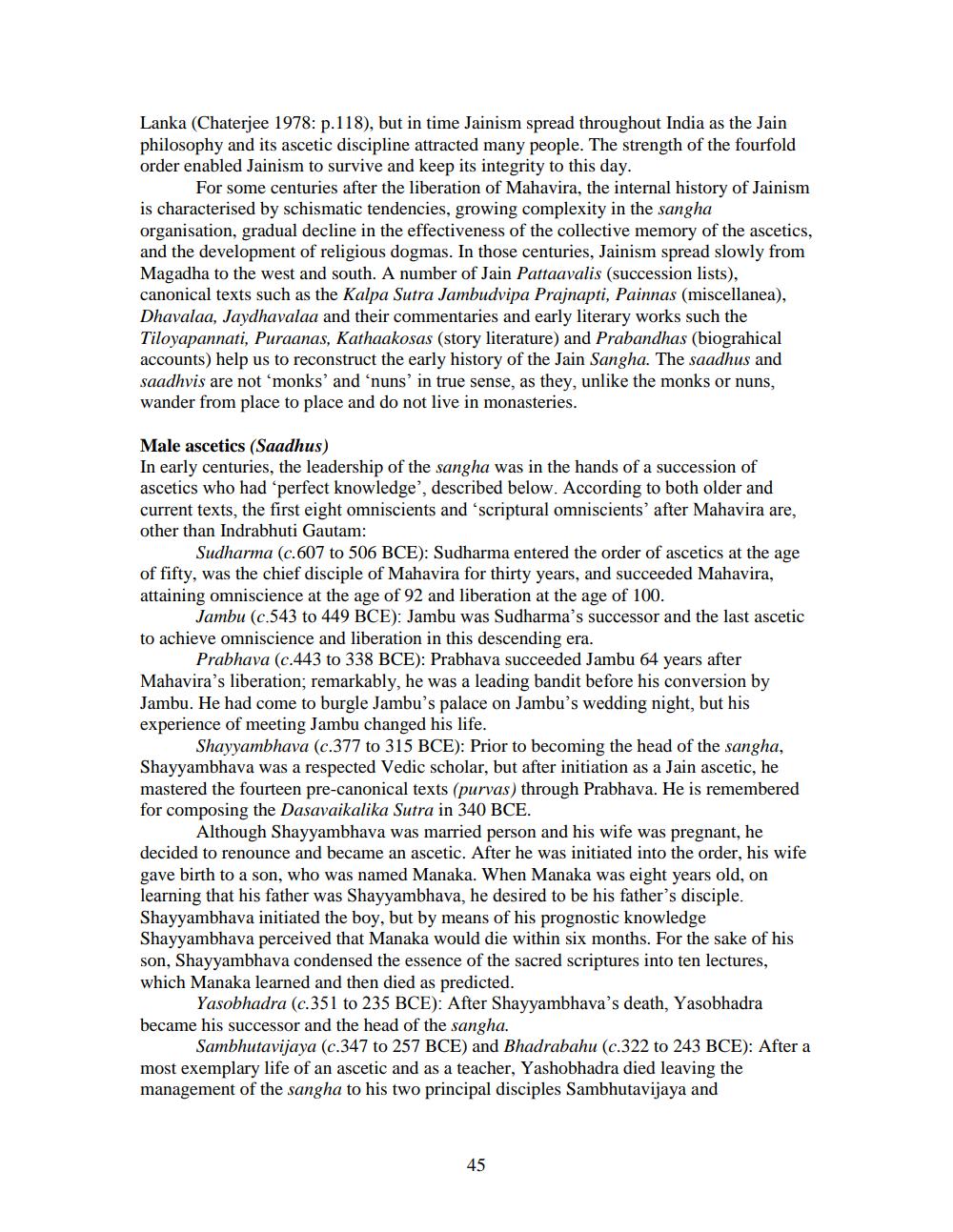________________
Lanka (Chaterjee 1978: p.118), but in time Jainism spread throughout India as the Jain philosophy and its ascetic discipline attracted many people. The strength of the fourfold order enabled Jainism to survive and keep its integrity to this day.
For some centuries after the liberation of Mahavira, the internal history of Jainism is characterised by schismatic tendencies, growing complexity in the sangha organisation, gradual decline in the effectiveness of the collective memory of the ascetics, and the development of religious dogmas. In those centuries, Jainism spread slowly from Magadha to the west and south. A number of Jain Pattaavalis (succession lists), canonical texts such as the Kalpa Sutra Jambudvipa Prajnapti, Painnas (miscellanea), Dhavalaa, Jaydhavalaa and their commentaries and early literary works such the Tiloyapannati, Puraanas, Kathaakosas (story literature) and Prabandhas (biograhical accounts) help us to reconstruct the early history of the Jain Sangha. The saadhus and saadhvis are not 'monks' and 'nuns' in true sense, as they, unlike the monks or nuns, wander from place to place and do not live in monasteries.
Male ascetics (Saadhus)
In early centuries, the leadership of the sangha was in the hands of a succession of ascetics who had 'perfect knowledge', described below. According to both older and current texts, the first eight omniscients and 'scriptural omniscients' after Mahavira are, other than Indrabhuti Gautam:
Sudharma (c.607 to 506 BCE): Sudharma entered the order of ascetics at the age of fifty, was the chief disciple of Mahavira for thirty years, and succeeded Mahavira, attaining omniscience at the age of 92 and liberation at the age of 100.
Jambu (c.543 to 449 BCE): Jambu was Sudharma's successor and the last ascetic to achieve omniscience and liberation in this descending era.
Prabhava (c.443 to 338 BCE): Prabhava succeeded Jambu 64 years after Mahavira's liberation; remarkably, he was a leading bandit before his conversion by Jambu. He had come to burgle Jambu's palace on Jambu's wedding night, but his experience of meeting Jambu changed his life.
Shayyambhava (c.377 to 315 BCE): Prior to becoming the head of the sangha, Shayyambhava was a respected Vedic scholar, but after initiation as a Jain ascetic, he mastered the fourteen pre-canonical texts (purvas) through Prabhava. He is remembered for composing the Dasavaikalika Sutra in 340 BCE.
Although Shayyambhava was married person and his wife was pregnant, he decided to renounce and became an ascetic. After he was initiated into the order, his wife gave birth to a son, who was named Manaka. When Manaka was eight years old, on learning that his father was Shayyambhava, he desired to be his father's disciple. Shayyambhava initiated the boy, but by means of his prognostic knowledge Shayyambhava perceived that Manaka would die within six months. For the sake of his son, Shayyambhava condensed the essence of the sacred scriptures into ten lectures, which Manaka learned and then died as predicted.
Yasobhadra (c.351 to 235 BCE): After Shayyambhava's death, Yasobhadra became his successor and the head of the sangha.
Sambhutavijaya (c.347 to 257 BCE) and Bhadrabahu (c.322 to 243 BCE): After a most exemplary life of an ascetic and as a teacher, Yashobhadra died leaving the management of the sangha to his two principal disciples Sambhutavijaya and
45




